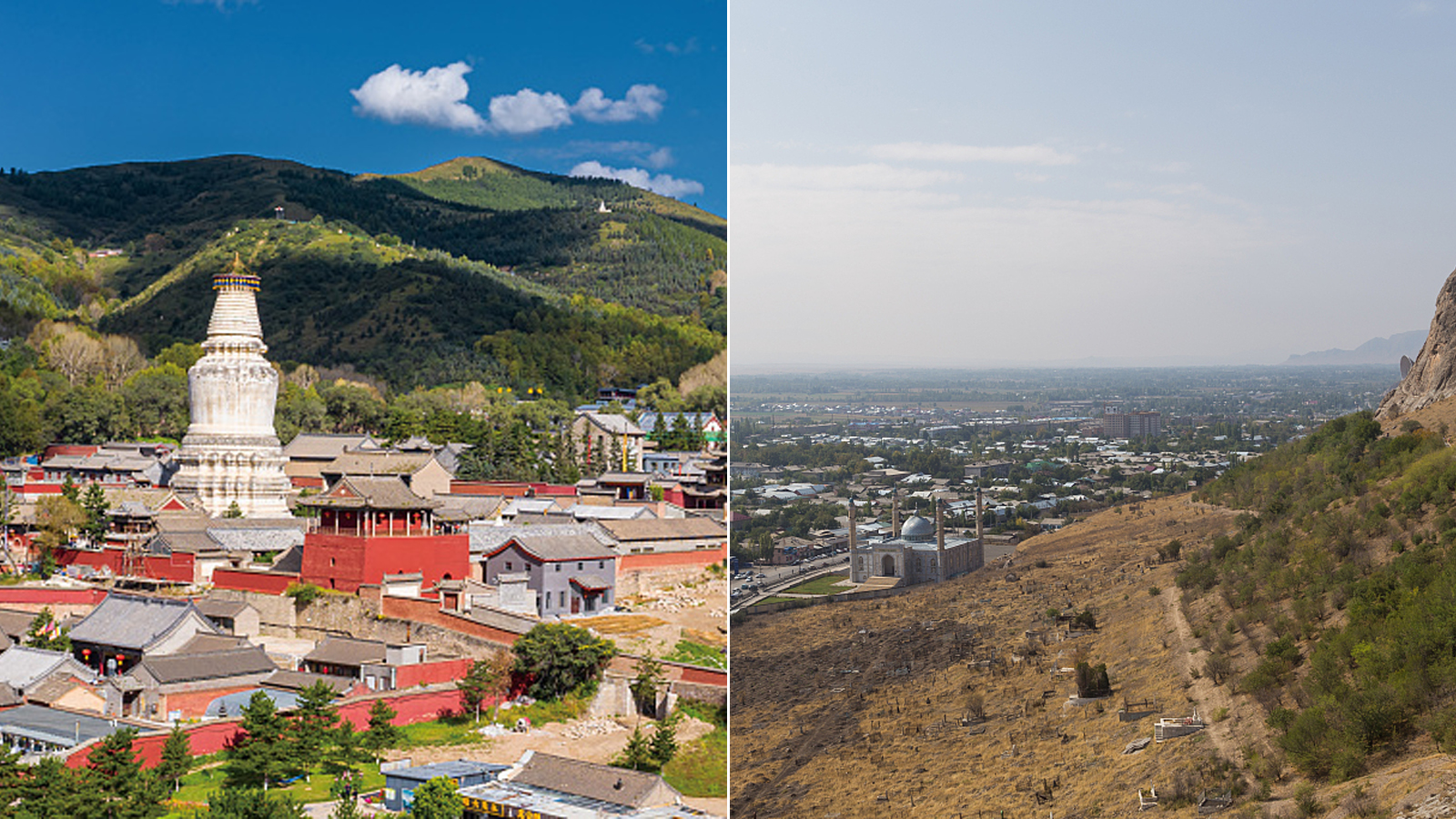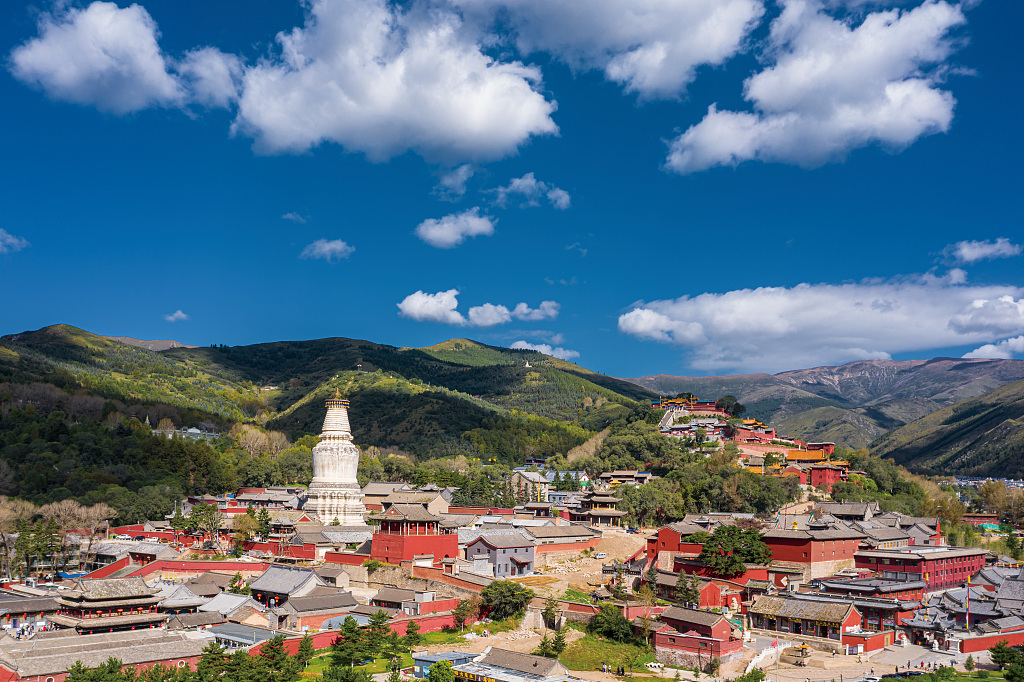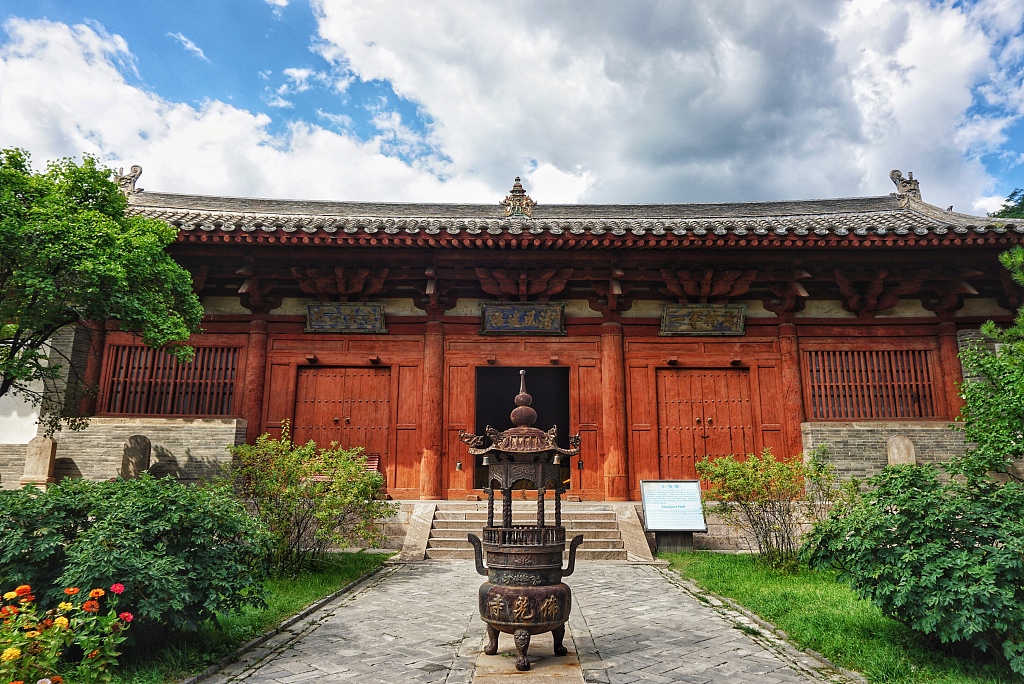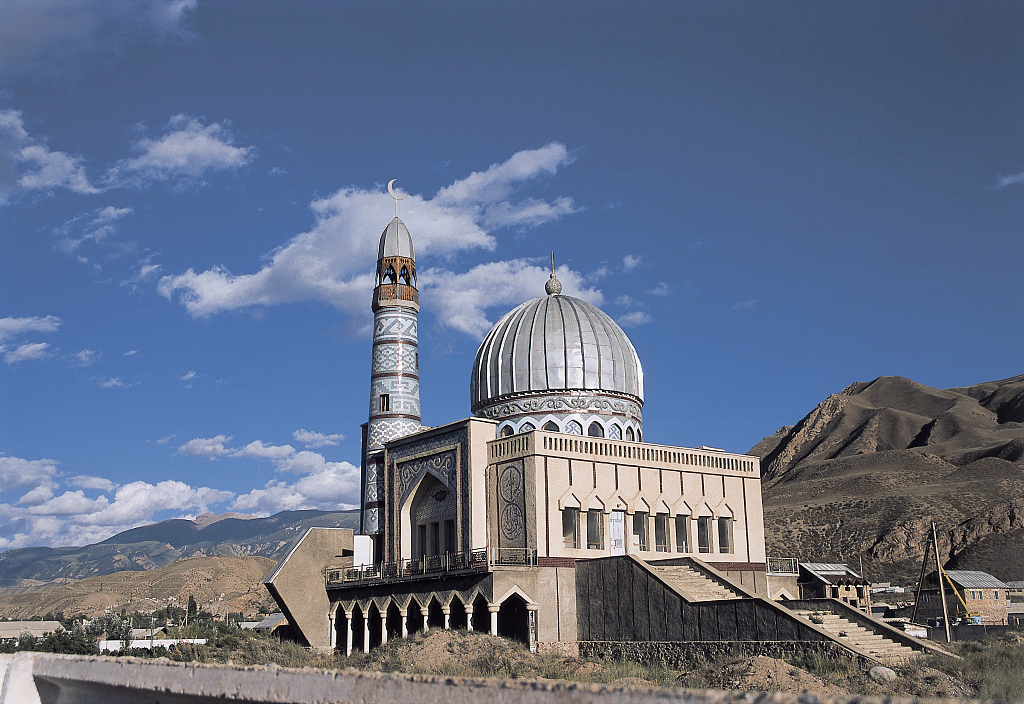
Mount Wutai in China and Sulaiman-Too Sacred Mountain in Kyrgystan. /CFP
Mount Wutai in China and Sulaiman-Too Sacred Mountain in Kyrgystan. /CFP
Mount Wutai, a sacred Buddhist mountain in Xinzhou, Shanxi, is named after its five flat peaks. Coincidentally, there is also a five-peak sacred mountain named Sulaiman-Too which is more than 3,500 kilometers away in Kyrgyzstan. These two mountains, both included in UNESCO's World Heritage List, stand there still as a beacon to lead the religious followers. A closer inspection of these two heritage sites shows how two far-removed mountains became sacred places to attract so many followers and travelers to challenge themselves to reach the peaks.
Mount Wutai
Located in Xinzhou, north China's Shanxi Province, this cultural landscape is home to 41 temples and monasteries and 86 Buddhist activity venues. The East Main Hall of Foguang Temple is the highest surviving timber building of the Tang Dynasty (618-907), with life-size clay sculptures.

An aerial photo of Mount Wutai in Shanxi. /CFP
An aerial photo of Mount Wutai in Shanxi. /CFP
It is widely believed that Buddhism was introduced to Mount Wutai during the Eastern Han Dynasty (25-220), when two Indian monks arrived here and built Xiantong Temple. It is one of the first Buddhist temples in China and sine then Mount Wutai became the center of Chinese Buddhism.
The Buddhism development in Mount Wutai reached its first peak during the Northern and Southern Dynasties (386-589) when more than 200 temples had been set up. In Sui Dynasty (581-618), Emperor Wen ordered to build temples on each of the five open treeless peaks.

The East Main Hall of Foguang Temple was built in Tang Dynasty. /CFP
The East Main Hall of Foguang Temple was built in Tang Dynasty. /CFP
In Tang Dynasty, Mount Wutai welcomed its second Buddhist flourishing period that its number of temples and monks reached over 300 and 3,000 respectively. Since then, it was regarded as a sacred mountain among Buddhist followers and the global center for Buddhist Manjusri worship. Many followers and monks from across China and other Asian countries made pilgrimages and studied here, a cultural tradition that is still living.
Now more than 30,000 Buddhist images exist in Mount Wutai, in various forms of clay, metal, stone, wooden, embroider and painting figures. The 150 existing pagodas also show diversified appearances in size and material. The biggest one is as high as over 50 meters while the smallest one is only five millimeters in height. Besides the commonly used stone, wood and brick, some pagodas were made from metal, jade, and even crystal.
Sulaiman-Too Sacred Mountain
Located at the crossroads of important routes on the Central Asian Silk Roads, Sulaiman-Too Sacred Mountain in the Fergana Valley forms the backdrop to the city of Osh of Kyrgyzstan. In mediaeval times Osh was one of the largest cities in the area and Sulaiman-Too served as a beacon for travelers.

Standing on the Sulaiman-Too Sacred Mountain, one can enjoy a good bird's eye-view of Osh, the second largest city in Kyrgyzstan. /CFP
Standing on the Sulaiman-Too Sacred Mountain, one can enjoy a good bird's eye-view of Osh, the second largest city in Kyrgyzstan. /CFP
For at least 1,500 years, Sulaiman-Too has been worshiped as a sacred mountain. Its five peaks and slopes contain 101 ancient cult places and caves with petroglyphs in shapes of human, animal and geometric figures, all interconnected with a network of ancient paths.

A mosque at Sulaiman-Too Sacred Mountain in Kyrgyzstan. /CFP
A mosque at Sulaiman-Too Sacred Mountain in Kyrgyzstan. /CFP
Though most have been abandoned, 17 places in the mountain are still in use as pilgrimage sites, including two 16th century mosques.
The mountain is an exceptional spiritual landscape reflecting both Islamic and pre-Islamic beliefs and particularly the cult of the horse. It has had a profound effect over a wide part of Central Asia.